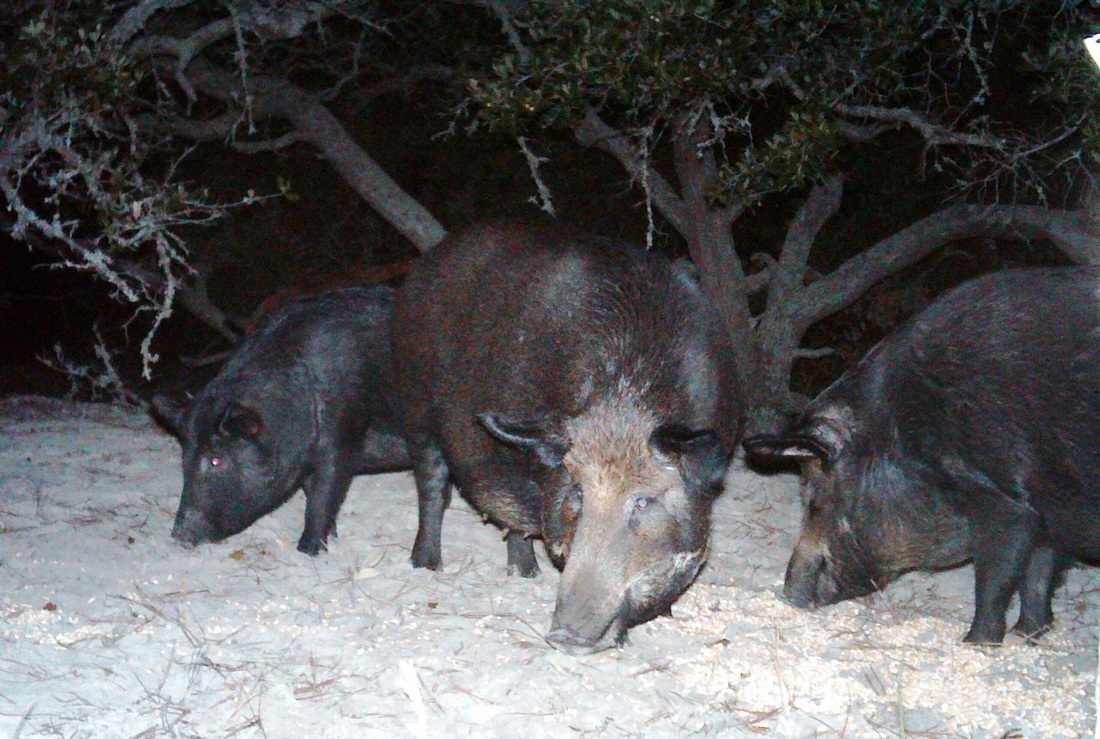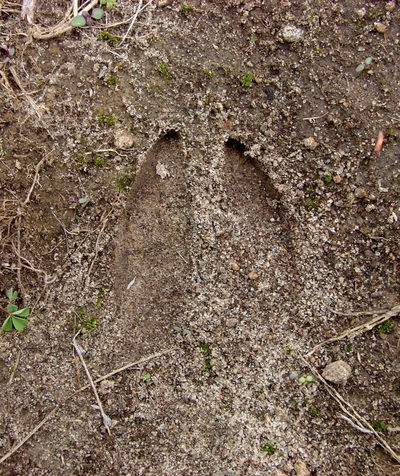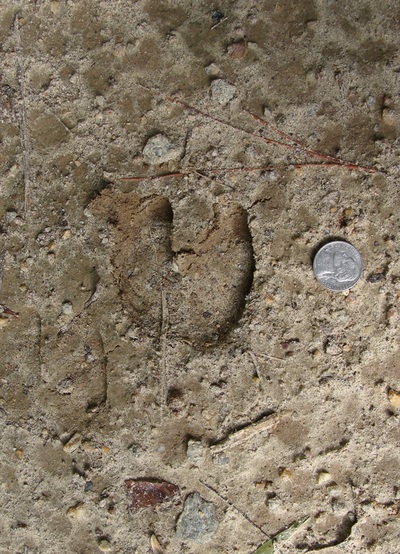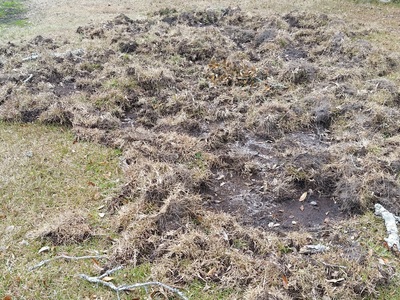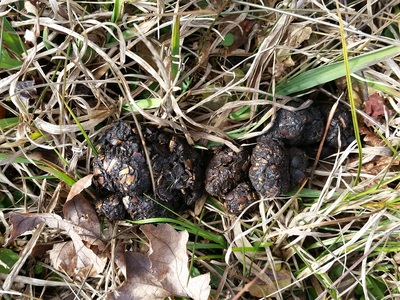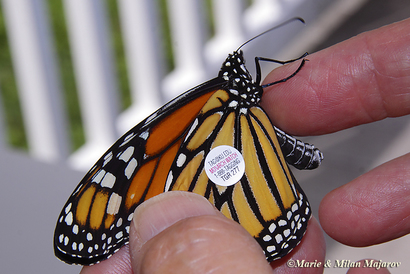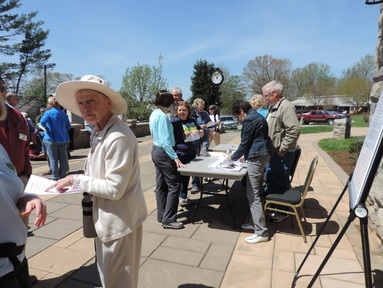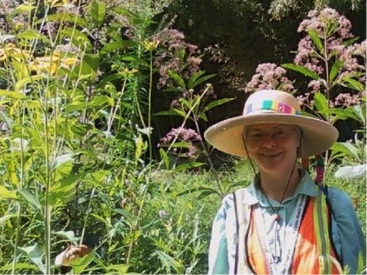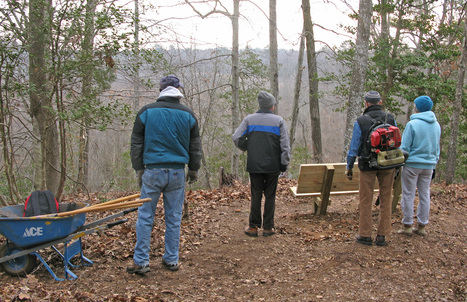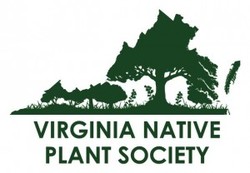This article was written by Virginia Master Naturalist volunteers for their chapter annual reports, and then compiled and edited by Susan Austin Roth (Arlington Regional Chapter.) Master Naturalists across the Commonwealth deserve a round of applause for their efforts during the past year. In 2014, volunteer hours totaled 108,392 service hours with 26,355 of those hours in education, 35,092 in citizen science, 25,047 in stewardship, and 21,898 in administration. These service hours have an estimated value to Virginia of $2,654,520. In 2014, they made 102,951 contacts through their education programs; improved more than 2,500 acres of public land through their stewardship efforts; and trained 480 new volunteers. More than 1,000 Master Naturalists volunteered enough hours to maintain their certification, and, all told, 1,450 offered volunteer services. Chapters throughout Virginia worked with more than 450 local partner organizations. Since the program’s inception in 2005, volunteers
have contributed a total of 526,583 hours of service valued at more than $12.3 million.
Read on for some highlights from chapters large and small across the state!
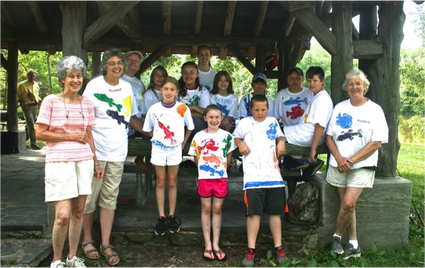 Central Piedmont Chapter and their Young Naturalists Camp at Bear Creek Lake State Park.
Central Piedmont Chapter and their Young Naturalists Camp at Bear Creek Lake State Park.
Central Piedmont Chapter
In 2012, members began planning with Cumberland County 4-H and Bear Creek Lake State Park staff to develop a Young Naturalist Day Camp for 9 to 13 year olds. In 2013 and 2014, a combined total of 30 youngsters enrolled in the camps and received exposure and instruction relating to mammals, reptiles and amphibians, insects, owls and other birds, fishing and canoeing, dip-netting for critters, tracking, and keeping a naturalist field journal. The success of the camp can be measured by camper feedback, which was overwhelmingly positive!
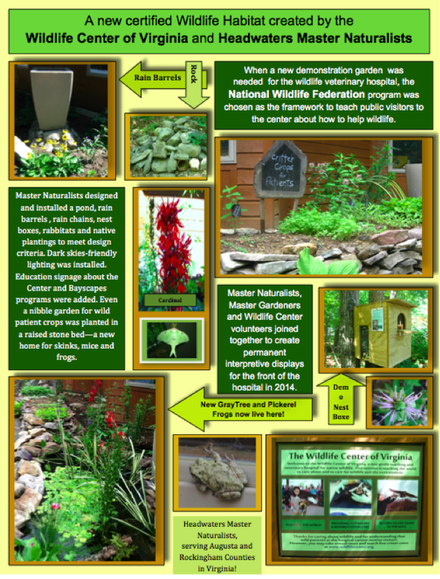 Highlights of the Headwaters Chapter’s focus project for 2014.
Highlights of the Headwaters Chapter’s focus project for 2014.
Headwaters Chapter
When the Headwaters Master Naturalist Volunteer Service Projects Committee canvassed their membership, the overwhelming choice was to do a focus project for The Wildlife Center of Virginia, a veterinary hospital for native wild animals in Waynesboro. Over the course of the next year, twenty -three volunteers devoted 281 service hours to the center. Their efforts were multi-pronged. One project involved removing the invasive non-native plants from the front of the building and replacing it with a garden to provide food for the wild animal patients. Another project was to design and build outreach displays and signs about native wildlife-friendly landscaping for the general public. Another was to achieve certification of the grounds as a National Wildlife Federation Wildlife Habitat.
They sought to engage as many members’ talents as possible in this complex project, by working in new teams and with master gardeners. Twenty-three members participated in workdays, and other members provided refreshments and materials. Each team functioned independently, but workdays were shared, and the timeline included several planning sessions and a public ribbon-cutting. It was possible to build, dig, paint, plant, haul gravel, create a pond, feed volunteers, get to know each other better, involve the press for outreach, and cooperate with other groups. The Chapter achieved their goals and those of of The Wildlife Center and set a wonderful precedent for annual focus projects in the future.
Specifically, the stone bed, native plant and pond teams worked together to renovate the north front garden bed by adding a pond and rain-barrels and plantings of native perennials. They also renovated the path connecting the upper and lower driveways with demonstration nest boxes, rabbitats and new signs. Storm-water and soil quality were addressed in several ways, and clover was sown on an eroding bank behind the wildlife center. The nest box team built and installed the demonstration nest boxes and created on-line nest box plan instructions for the Wildlife Center’s website, while the sign team designed and created new full-color aluminum signs, repaired, constructed and stained the sign boards, and provided information and an online tour for the Wildlife Center’s website. (See more at www.wildlifecenter.org. )
The project took one year to implement, and it was completed in August, 2014, with a wonderful ribbon-cutting that included an advanced education course on wild animal foods and tours of The Wildlife Center veterinary hospital and grounds. The benefit to the Wildlife Center of Virginia is obvious, but the significance of creating working teams that cross communicate and co-ordinate within the chapter cannot be overestimated for the development of chapter cohesion and functionality. In addition, creating friendships and networking opportunities across partnering groups offers future gold for the chapter and the VMN Program. Name recognition is also pure treasure both for our young chapter and for the program.
New River Valley Chapter
The NRV Chapter applied for and received a $4,000 grant from the VA Department of Environmental Quality for a Citizen Water Quality Monitoring Program. The area covered by the NRV Chapter lies on the Eastern Continental Divide and encompasses the headwaters of three watersheds. At the time, there were no water-quality monitoring programs for collecting data in these watersheds. The initial stream sampling plan included a total of nine locations in the New River and Roanoke River watersheds. These locations were sampled for physical and chemical parameters from August through December in 2014, and for bacte
ria from September through December. In addition, five locations were sampled for benthic invertebrates in the fall of 2014. Money from the grant allowed the chapter to purchase a pH/DO/temperature meter as well as pay for E. coli analyses for the September through December sampling events. Another goal of the Citizen Water Quality Monitoring Program was to train additional volunteers to be Certified Save Our Streams monitors. Training classes were held in October through November and resulted in the certification of five additional SOS volunteers. This project involved nine volunteers totaling 100 service hours.
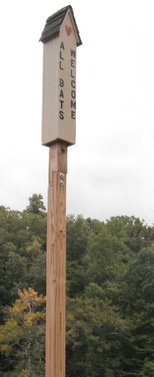 A bat box at Pocahontas State Park.
A bat box at Pocahontas State Park.
Pocahontas Chapter
Fifteen volunteers devoted 215 Citizen Science service hours to bat monitoring at Pocahontas State Park. This project was carefully designed from the start, and the projected monitoring sites and volunteers hours were right on track when the data was tabulated for the first bat monitoring season in 2014. Each week from April to October, volunteers gathered for quick instructions on how to count bats at selected sites, then set off in pairs to survey the eight to ten sites identified as most active. The teams worked to hone their observation skills in this challenging environment, determined criteria that would help them arrive at more accurate counts by careful monitoring of flight behaviors and feeding patterns, and worked as a team to collect data. In addition, after surveying existing bat houses and researching the most successful designs for new houses, volunteers built and installed four rocket-box-style bat houses in 2014. They spent the winter months constructing additional houses and maintaining existing houses.
Shenandoah Chapter
Ten chapter members spent 93 hours working in conjunction with the VA Department of Conservation and Recreation to plan and execute a BioBlitz at Sky Meadows State Park. This consisted of a 24-hour exploration to rapidly inventory the biodiversity of a 76-acre area of the park. Forty-two Master Naturalists, many from other chapters, as well as some park visitors, produced approximately 425 hours of citizen science volunteer service and a large amount of data that is still being processed. Future BioBlitz events for Sky Meadows are planned for 2015. This BioBlitz represents the initial activity in a greater project that involves the chapter accepting the responsibility for the stewardship of a 76-acre plot within the park. The chapter intends to develop interpretive programs, remove invasive species, and use the area as a living laboratory to teach park visitors and Master Naturalists about the local wildlife diversity.
Central Blue Ridge Chapter
Six volunteers offered 115 service hours in education at the Virginia Museum of Natural History in Martinsville, which works closely with the Rockfish Valley Foundation Natural History Center at Spruce Creek . The museum’s display exhibit for 2014 concerned biodiversity and featured informative panels and samples on loan from the center. Blue Ridge Master Naturalists supplied support for the exhibit, which was extremely popular. Master Naturalists and other docents were available each day the center was open for visitors. The outreach included describing trail locations and history of the area, plus the explaining the geology of the Rockfish Valley. Displays, handouts, kiosks and talks educate the visitors. Books, booklets, ID cards for animals, plants, butterflies, etc. and other items are on sale. Free handouts for children and adults are also available. Computers and WIFI are available for research purposes.
Thanks to grants and donations, the center expanded the Children’s Corner to include many interactive activities about the stresses on our natural environment. They began an outdoor children’s trail, which will have stations displaying animals, geology, and native species. Gardening with native plants inspired the creation of a native species meadow that they will continue to expand and the beginnings of a milkweed garden and a butterfly area. Stuffed mammals were donated to the center so that children could see up close the animals living in our area. A black bear is especially enjoyed.
In 2014, there were over 1,300 visitors to the museum. In 2015, the museum will be open an additional day, and the children’s nature trail project will be completed with links to museum exhibits.
Arlington Regional Chapter
In 2014, ARMN expanded its focus on habitat restoration work to embrace a number of neighborhood parks, including HOG Park ( Haley-Oakridge- Gunston), Tuckahoe Park, Long Branch, Gulf Branch, W&OD Trail near Bon Air Park, Fort, and Powhatan Springs.
A dedicated ARMN member, or members, who used several ‘best practices” to attract volunteers and community support take responsibility for organizing restoration efforts. These include regularly scheduled monthly invasive removal events, advertising to ARMN members and the broader community through county websites, and offering occasional natural history educational events related to the site. As a result of this diligent stewardship, most sites show significant visual and habitat improvement. Areas cleared of invasives have rebounded with the natural reemergence of native plants, or have been restored with plantings of locally grown native plants.
ARMN has also maintained its long-term support for Barcroft Park, which has been identified by Arlington County in its Natural Resources Management Plan as one of the most valuable ecological sites owned by the county because it features globally-rare and state-rare wetlands and locally rare native plants; these include a sensitive magnolia bog area, as well as State Champion, County Champion and other significant trees. ARMN volunteers continue to work with the county to be eyes and ears in maintaining this high ecologically valuable resource and as a result of Master Naturalists’ involvement, Arlington County is currently providing professional treatment of invasives to this park as part of a multi- year program. In 2014, ARMN support in Barcroft also involved partnering with a local high school and their teachers in the Advanced Placement Environmental Science classes
to direct an education and work day with the students. In 2013, they had begun work with these teachers and students on a potential meadow site by removing invasives and planting appropriate native species provided by Earth Sangha. In 2014, the volunteers sponsored another work day with the students, which included an educational walk with the Arlington County Natural Resources Manager.
Fifty-two Arlington Regional Master Naturalists devoted 1244 hours of stewardship to these projects in 2014.
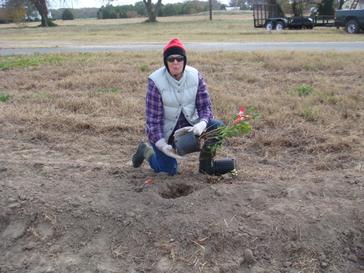 A Virginia Master Naturalist volunteer plants a southern wax myrtle shrub at Pickett’s Harbor Natural Area Preserve. Photo from Field and Myers 2014.
A Virginia Master Naturalist volunteer plants a southern wax myrtle shrub at Pickett’s Harbor Natural Area Preserve. Photo from Field and Myers 2014.
Eastern Shore Chapter
The chapter made extraordinary contributions to songbird habitat restoration at Pickett’s Harbor Natural Area Preserve by DCR-DNH in 2013 and 2014.
The Eastern Shore of Virginia is an important stopover area for neo-tropical and temperate songbirds during autumn migration to wintering grounds. The birds congregate in shrub and forest habitats on the southern Delmarva Peninsula to rest and forage before crossing the physical barrier presented by the Chesapeake Bay. To ensure a successful migration, songbirds must consume large quantities of fruits and insects to replenish energy stores needed for long-distance flight. This is especially critical to birds stopped on the southern Delmarva Peninsula, because most are inexperienced first-year birds attempting to navigate the migration route for the first time. Inexperience increases the likelihood of inferior habitat selection, leading to the possibility of over expenditure of fat stores needed to reach wintering sites. Increasing the acreage of appropriate migratory songbird stopover habitat on the southern Delmarva Peninsula is, therefore, critical to the stability of neo-tropical and temperate migratory songbird populations and was the primary focus of conservation partners on the Eastern Shore of Virginia.
Beginning in November 2013 and ending in April 2014, Master Naturalists and other volunteers helped to plant 62 acres of former agricultural fields with southern wax myrtle shrubs and oak saplings at the preserve. Planting was completed in two separate operations: during two days in November, 2013, for shrub planting and over the course of a four-week period in March and April, 2014. Work was completed in-house by DCR-DNH staff with planting labor provided by the hard-working, dedicated volunteers, who contributed a total of 442 hours of labor at no cost to the project. Just one year after conversion from bare farm fields, the restoration site is already being used by at least 27 species of migratory birds. Pioneer plant species that naturally colonize recently cropped fields in combination with widely-spaced planted shrubs and tree saplings quickly provides preferred bird habitat and develops rapidly into exceptionally high-value cover. These early results illustrate the effectiveness of this method to quickly enhance habitat value for songbirds and the cost savings that can be realized by developing and utilizing a strong, organized network of dedicated volunteers for conservation work.
This article draws on details and photos reported in
Field, D.P. and R.K. Myers. 2014. Pickett’s Harbor Natural Area Preserve Migratory Songbird Habitat Restoration. Virginia Department of Conservation and Recreation, Division of Natural Heritage, Richmond, Virginia. Final report for Task 11.05, FY 2011, Section 306A submitted to USDC National Oceanic and Atmospheric Administration. Natural Heritage Technical Report # 14-09, November 2014. 12 pp.
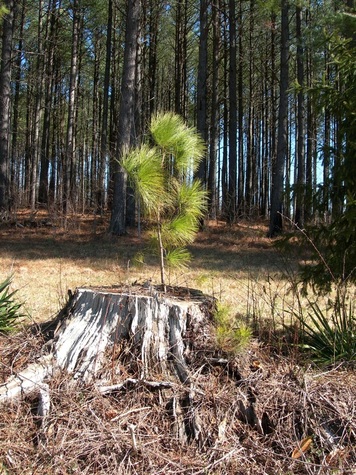 Thanks to all who have helped VMN grow from a young seedling to a mature tree of a program!
Thanks to all who have helped VMN grow from a young seedling to a mature tree of a program! 
